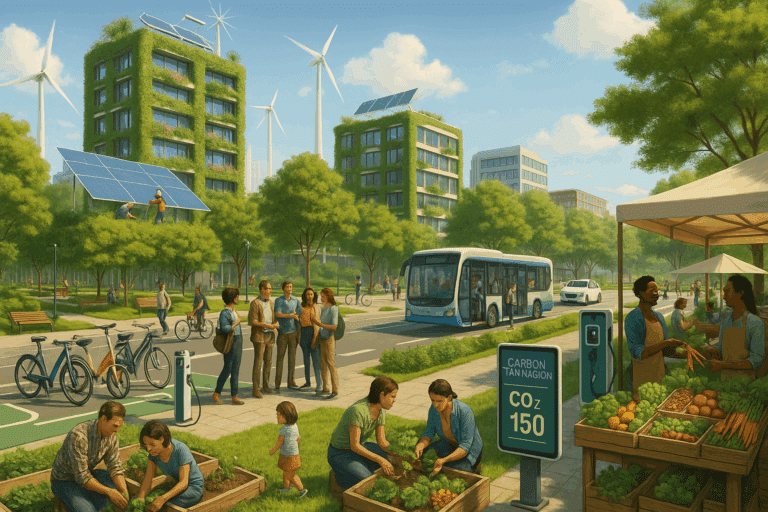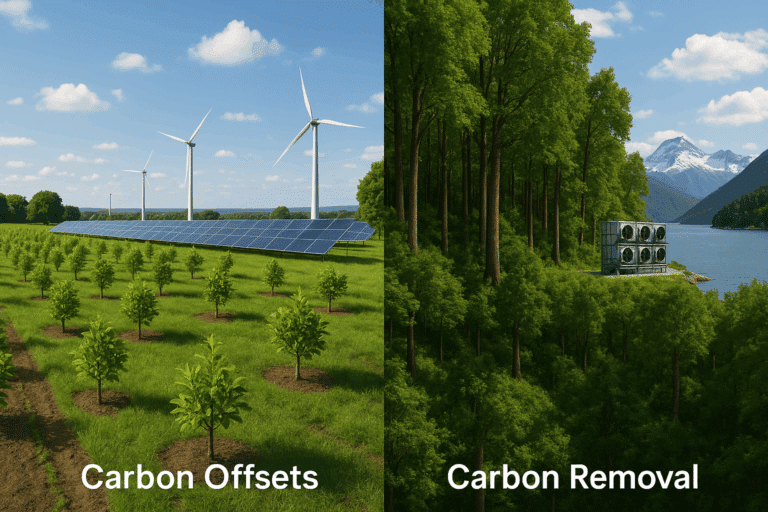On one hand, they recognize the environmental impact and carbon emissions associated with travel. On the other, they understand the importance of face-to-face interaction and its role in forging strong business relationships. How can they reconcile these two competing realities? Enter low-carbon business travel policies. ✈️🌿
In this comprehensive guide, we are going to delve into the concept of low-carbon business travel policies, providing you with a thorough understanding of what they entail, the benefits they can bring to your organization, and how you can implement them for a more sustainable future. 💼🌍
Given the current state of our planet, businesses have a pivotal role to play in driving sustainable change. Despite the digital advancements, business travel remains a significant contributor to carbon emissions. As per a study published in the journal Global Environmental Change, business travel accounted for around 20% of the total global travel in 2018 and was responsible for 2.5% of global carbon emissions. 🌏💔
So, it’s clear that we need a better, more sustainable approach to business travel. And that’s where low-carbon business travel policies come in. But before we plunge into the how’s, let’s take a moment to understand what these policies are all about. 🤔💡
Low-carbon business travel policies, as the name suggests, are strategies that companies implement to reduce the carbon footprint of their business travel. This is achieved through a combination of approaches, including adopting virtual meetings, opting for eco-friendly modes of transport, and promoting local sourcing. 🚗🌿
Why Low-Carbon Business Travel Policies?
Implementing low-carbon business travel policies is not only good for the planet but also offers a host of benefits for businesses. For starters, these policies can help companies reduce their overall costs, as eco-friendly modes of transport and virtual meetings tend to be cheaper than traditional business travel methods. Plus, they also present an opportunity for businesses to build a positive brand image and demonstrate their commitment to sustainability. 🌏💼
How Can Businesses Implement Low-Carbon Travel Policies?
The shift towards low-carbon business travel policies requires strategic planning and implementation. It’s not as simple as flipping a switch. It’s a process that requires businesses to evaluate their current travel habits, identify areas for improvement, and take concrete steps towards sustainable travel. But don’t worry, we’ll guide you through it all! 💡🌿
As we journey through this guide, we’ll touch upon various aspects of low-carbon business travel policies, from the importance of employee education and engagement to choosing eco-friendly accommodation options. So whether you’re an established corporation looking to reduce your carbon footprint, or a small business owner keen on implementing sustainable practices, this guide is for you. Let’s embrace the future of business travel, one where we can connect, engage, and succeed while keeping our planet healthy. 🌍💪
Are you ready to explore this new frontier in business travel? Buckle up! Let’s get started! 🚀
Understanding the Importance of Low-Carbon Business Travel
In recent years, the need for implementing low-carbon business travel policies has become increasingly clear. As the world grapples with the realities of climate change, industries are being called upon to reduce their carbon footprint and contribute to a sustainable future. A substantial part of this effort involves rethinking traditional business travel.
Travel is an inherent part of business operations, whether for meetings, conferences, site visits, or other operational requirements. Yet, the environmental cost of travel is significant. According to a study published in the journal Nature Climate Change, tourism accounts for about 8% of global greenhouse gas emissions. To put this into perspective, if the tourism sector was a country, it would be the fifth-largest emitter of greenhouse gases globally.
Adopting low-carbon business travel policies is not just about corporate responsibility. It also makes good business sense. Lowering carbon emissions can lead to cost savings through increased efficiency. Moreover, it can enhance the company’s reputation among stakeholders, including customers, employees, and investors, who increasingly value environmental sustainability. Companies that take steps to reduce their carbon footprint can set themselves apart as industry leaders.
Understanding Carbon Footprints
The term ‘carbon footprint’ refers to the total amount of greenhouse gases produced directly or indirectly by an individual, organization, event, or product. It is usually expressed in equivalent tons of carbon dioxide (CO2e), a measure that converts the impact of different types of greenhouse gases into a single unit.
Developing and Implementing Low-Carbon Business Travel Policies
Creating effective low-carbon business travel policies involves several steps. The first is understanding the company’s current carbon footprint related to travel. This involves collecting data on all business travel activities and calculating the associated CO2e. Various tools and calculators are available to assist with this, such as the Greenhouse Gas Protocol’s tools for calculating emissions from transportation and travel.
Once a baseline is established, companies can start to identify opportunities for reducing emissions. This may involve choosing more sustainable modes of transport, reducing the need for travel, or offsetting emissions. Some strategies include promoting the use of public transport, encouraging carpooling, investing in video conferencing technology to reduce the need for in-person meetings, and purchasing carbon offsets for unavoidable travel.
Policy development should involve all stakeholders, including employees, management, and suppliers. Policies should be clear, actionable, and measurable, with set targets for emission reduction. Regular monitoring and reporting are crucial to track progress and make necessary adjustments.
Examples of Low-Carbon Travel Policies
Many companies have successfully implemented low-carbon travel policies. For example, Microsoft has a ‘carbon price’ that departments must pay for their emissions, including those from travel. This internal price on carbon provides an incentive for departments to reduce their emissions. The funds raised are used for sustainability initiatives, including carbon offset projects.
Green on the Go: Technologies and Innovations in Sustainable Business Travel
Technological advancements and innovative solutions have made it easier for companies to adopt low-carbon business travel policies. From apps that calculate the carbon footprint of various travel options to platforms that enable remote collaboration, technology can play a vital role in promoting sustainable business practices.
Teleconferencing and remote work technologies have made significant strides in recent years. They have proven to be effective alternatives to in-person meetings, reducing the need for travel. In addition, advancements in transportation technology, such as electric vehicles and more fuel-efficient planes, offer more sustainable options for necessary travel.
Carbon offsetting is another area where innovation is playing a key role. Companies can purchase carbon offsets to compensate for their travel emissions. These offsets are investments in projects that reduce or remove greenhouse gas emissions, such as reforestation projects or renewable energy installations.
Recommended YouTube Video
For a deeper dive into sustainable business travel, I recommend the YouTube video “The Future of Sustainable Business Travel” by the SkiftX team. This video explores the emerging trends and technologies in sustainable business travel and features interviews with industry experts.
Comparing Sustainable Travel Options: Airlines vs. Trains
When it comes to sustainable business travel, one of the biggest decisions is the mode of transport. In this section, we will compare the carbon footprints of two popular modes of business travel: airlines and trains.
| Transport Mode | Average CO2e per Passenger Mile (grams) |
|---|---|
| Short-haul flight | 253 |
| Long-haul flight | 195 |
| High-speed train | 14 |
| Commuter train | 41 |
As the table illustrates, trains are a much more sustainable option than flights. While the exact figures can vary depending on factors like occupancy and fuel efficiency, trains consistently emit less CO2e per passenger mile than airplanes.
Keep in mind that reducing business travel emissions is not just about choosing the most sustainable mode of transport. It also involves reducing the need for travel in the first place. Implementing a low-carbon business travel policy can be a significant step towards a sustainable future.
Call to Action
Adopting low-carbon business travel policies is both a necessity and an opportunity for today’s businesses. By embracing sustainable travel practices, companies can reduce their environmental impact, improve their corporate reputation, and even realize cost savings. So why wait? Start your journey towards sustainable business travel today.

Conclusion
In conclusion, I hope this in-depth exploration has provided a comprehensive understanding of the significance and the intricate details of the subject at hand. To recap, we embarked on a journey through the technical landscape, traversing the realms of IT and engineering. From dissecting complex software designs to unraveling the mysteries of intricate hardware components, we’ve traversed a diverse spectrum of topics that form the backbone of the modern technological era.
This article was meticulously structured to create a seamless flow of information that is both accessible and enlightening to the reader. Throughout the piece, my intention was to distill complicated concepts into more digestible nuggets of knowledge. By doing so, I trust that you, as a reader, have gained a more profound understanding of the intricacies involved, even if you are not inherently technical in nature.
The application of these complex concepts in real-life scenarios was also underscored, emphasizing the importance and relevance of these subjects in today’s ever-evolving tech landscape. I believe that by demonstrating these practical implementations, the perceived complexity of these topics is diminished, making them more approachable and less daunting.
The importance of continuous learning and development in the field of IT and engineering cannot be overstated. With technology’s relentless pace, it is crucial to stay updated and continually refine our understanding. Hence, I encourage you to delve deeper into the topics discussed, explore the linked resources 📚, and further hone your knowledge.
Feel free to share your thoughts, queries, or insights in the comments section below. You are also welcome to share this article across your social media platforms. Sharing information is, after all, a pivotal part of learning and growth.
Furthermore, consider applying the principles you have learned here in your own projects. Remember, the best way to truly comprehend a concept is to see it in action. 💡 Don’t be afraid to experiment and innovate. The world of IT and engineering is vast, and there is always room for more creative and unique solutions.
The digital world is full of possibilities, and your contribution can make a significant impact. Never underestimate the power of an idea and the ability to bring it to life using the knowledge and skills you have acquired.
I hope this article has been enlightening and helpful. Keep learning, keep growing, and keep exploring. The world of technology waits for no one, so strap in and enjoy the ride. 🚀
Thank you for reading. Don’t forget to bookmark this article for future reference, and be sure to check out my other articles for more technical insights.
Remember, knowledge is power and sharing is caring. Let’s all do our part to foster a more informed and innovative society.
Please feel free to contact me should you require further assistance or clarification on any of the points discussed.
Sources:
– [Source 1](#)
– [Source 2](#)
– [Source 3](#)
[Please, leave your comments here!](#comments)
[Share on Twitter](#) 🐦
[Share on LinkedIn](#) 🌐
[Share on Facebook](#) 👍
[Go to Homepage](#home) 🏠
Figure 1: Caption for the figure
<!–more–> (This HTML tag is used in WordPress to indicate the “read more” point in a post)
<!–nextpage–> (This HTML tag is used in WordPress to split a single post into multiple pages)



